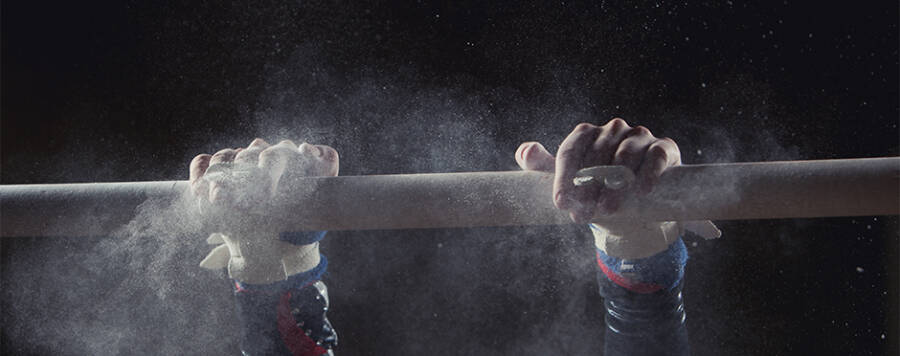1. Little League Shoulder:
Medical Name: Proximal Humeral Epiphysitis
Common Sports: Baseball, Tennis, Cricket, Volleyball, Overhead Throwing1
- Problem: Injury to the growth plate at the shoulder. This is often a result of repetitive microtrauma from the distraction and torsional, twisting, stresses placed on the shoulder during the throwing motion. X-rays may show widening of the growth plate, inflammation, or fragmentation. 2
- Signs/Symptoms: Pain and or swelling at the shoulder that may correlate with throwing frequency or duration. Reduced mobility or strength at the shoulder.3
- Prevention: Proper warm ups, sport specific strengthening and stretching, tracking frequency and duration of throwing based on medically recommended guidelines. Schedule a Video Throwing Analysis to enhance proper throwing mechanics, and try cross training with periodic rest from repetitive sporting activity.
Click here for further information on baseball recommendations.
2. Tennis Elbow/Golfer’s Elbow:
Medical Name: Lateral Epicondylosis/Medial Epicondylosis
Common Sports: Tennis, Racquet Sports, Rock Climbing, Golf, Bowling, Cheerleading
- Problem: Repetitive Injury or overuse of the muscles that lift your wrist backwards or forwards, specifically in the area where the muscles attach at the outside and inside of the elbow. 4
- Signs/Symptoms: Pain or soreness at the elbow, forearm, and/or wrist. Difficulty squeezing and turning, such as opening a jar or a doorknob.4
- Prevention: Proper warm ups, sport specific strengthening and stretching. Schedule an appointment at one of our Golf Rehabilitation Centers to enhance proper mechanics of the golf swing, cross training, periodic rest from repetitive sporting activity.
Click here for further information on elbow pain.
3. Gymnast’s Wrist:
Medical Name: Distal Radial Physeal Stress Syndrome
Common Sports: Gymnastics, Cheerleading, Power Tumbling, Acro
- Problem: Inflammation at the growth plate of the distal radius that may lead to a premature closure of the growth plate from repetitive weight bearing at the wrist.5
- Signs/Symptoms: Pain, swelling, tenderness at the wrist on the thumb side. Reduced strength and motion associated with pain.5
- Prevention: Proper warm ups, sport specific strengthening and stretching, cross training, periodic rest from repetitive sporting activty, wrist guards.
Click here for further information on wrist pain in gymnasts.
4. Gymnastics elbow:
Medical Name: Osteochondritis dissecans
Common Sports: Gymnastics, Cheerleading, Power Tumbling
- Problem: A piece of cartilage and part of the bone break off in the elbow6
- Signs/Symptoms: Pain, swelling, tenderness, reduction in motion, popping or clicking, inability to weight bear through the arm.6
- Prevention: Proper warm ups, sport specific strengthening and stretching, cross training, periodic rest from repetitive sporting activity, wrist guards, proper tumbling/vaulting/stunting mechanics.
Click here for further information about Athletico’s Gymnastics and Cheerleading services.
5. Thumb Tendonitis:
Medical Name: De Quervains Tenosynovitis
Common Sports: Golf, Cheerleading, Racquet Sports
- Problem: Inflammation of the tendons at the side of the wrist and base of the thumb7
- Signs/Symptoms: Aching, burning, or pain at the wrist on the thumb side that goes up into the forearm, pain with lifting or grasping, may include numbness or tingling.7
- Prevention: Proper warm ups, sport specific strengthening and stretching, cross training, periodic rest from repetitive sporting activity, proper sport mechanics and gear.
Remember that these little athletes are still growing. They have growth plates that are prone to injury and muscles and tendons that are trying to keep up with their growing bones causing tightness. That development can occur even into the twenties for some. Most children can respond well to conservative treatment and teaching our youth about reporting pain early is important. Sports can be fun, promote good health, provide goals, and build great relationships.
If you think you have a sports-related injury, see an Athletico Physical Therapist for a free assessment!
The Athletico blog is an educational resource written by Athletico employees. Athletico bloggers are licensed professionals who abide by the code of ethics outlined by their respective professional associations. The content published in blog posts represents the opinion of the individual author based on their expertise and experience. The content provided in this blog is for informational purposes only, does not constitute medical advice and should not be relied on for making personal health decisions.
Recommended Reading:
National Athletic Trainers’ Association Position Statement: Prevention of Pediatric Overuse Injuries
References:
1. Walsh, James. “Information and Rehabilitation Advice for: Proximal Humeral Epiphysitis.” James Walsh Osteopathy. 02 April 2015.
2. Frush, Todd J. and Lindenfeld, Thomas N. “Peri-epiphyseal and Overuse Injuries in Adolescent Athletes.” Sports Health. 2009 May; 1(3): 201-211.
3. Wilson, Burke. “Physical Therapist’s Guide to Proximal Humeral Epiphysitits.” Move Forward. Move Forward PT Editorial Board. 02 Apr. 2015.
4. “Physical Therapist’s Guide to Tennis Elbow (Lateral Epicondylitis).” Move Forward. Move Forward PT Editorial Board. 02 Apr. 2015.
5. Jones, Tracy. “Gymnast’s Wrist (Distal Radial Physeal Stress Syndrome).” Orthobullets. 02 Apr 2015.
6. Stanley, Laura. “Physical Therapist’s Guide to Osteochondritis Dissecans.” Move Forward. Move Forward PT Editorial Board. 02 Apr. 2015.
7. Elizabeth Dallas, Boris Alexandra. 02 April 2015.

 width="900"
height="356"
>
width="900"
height="356"
>
